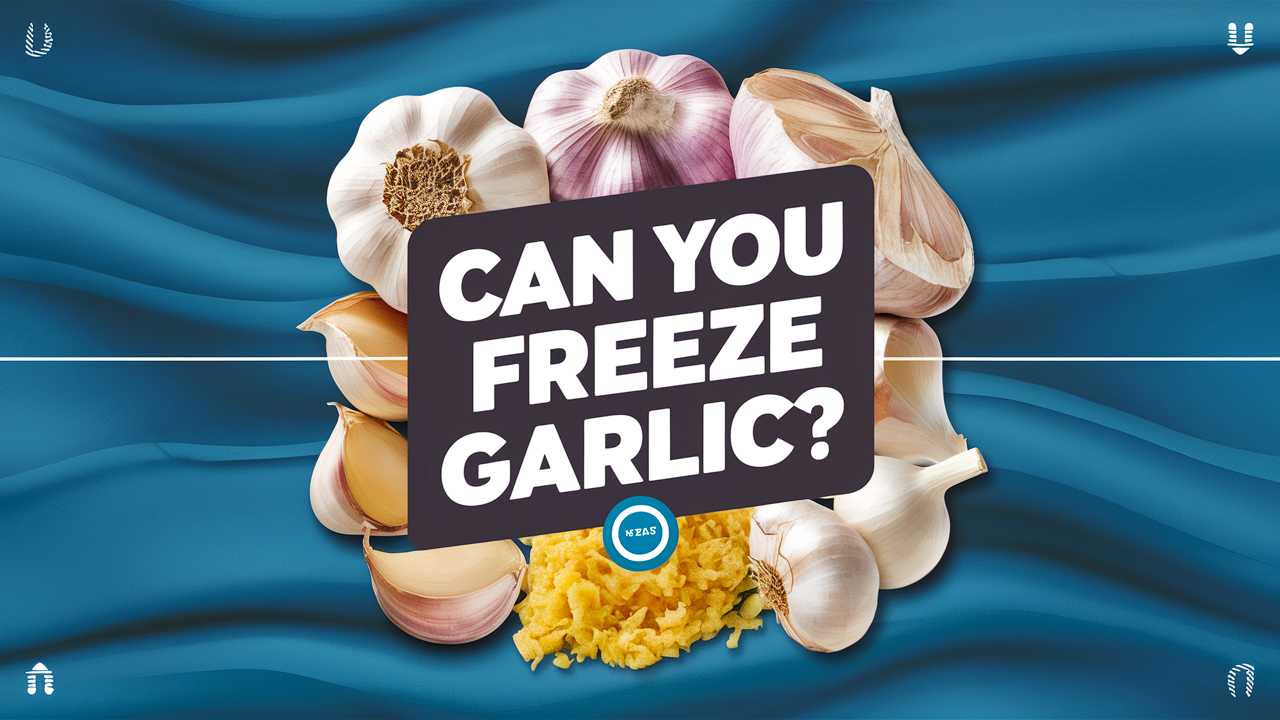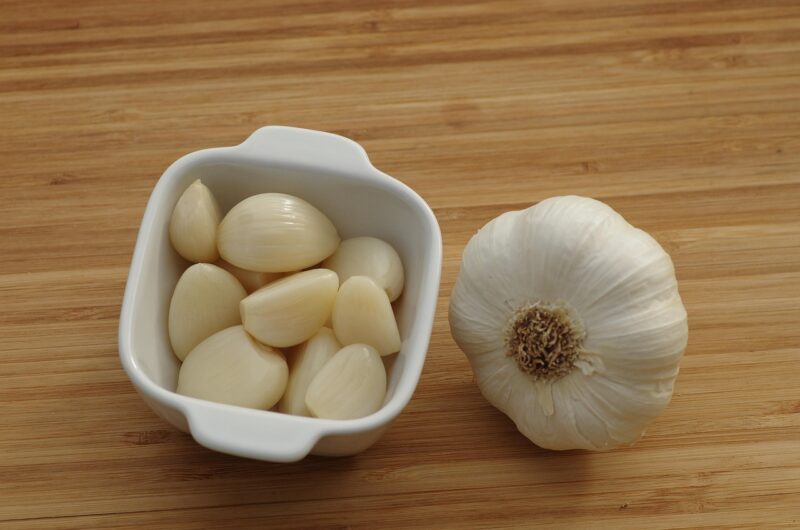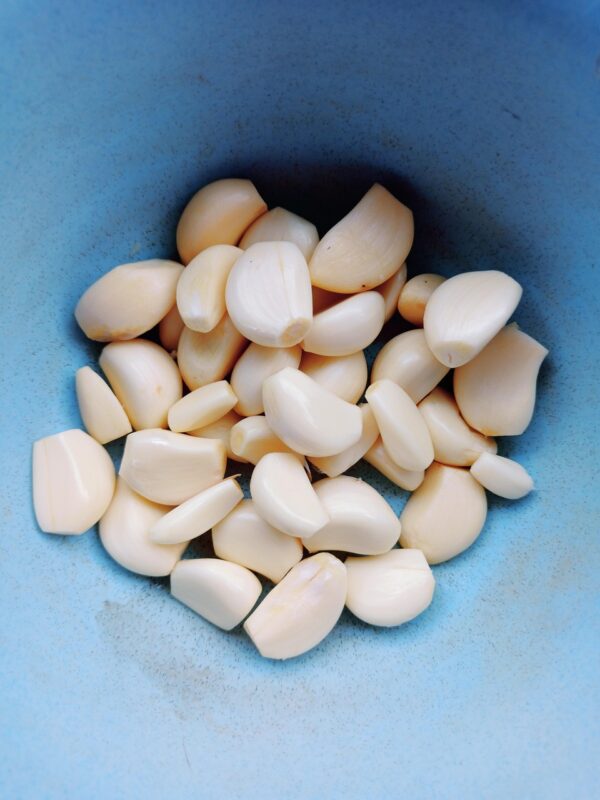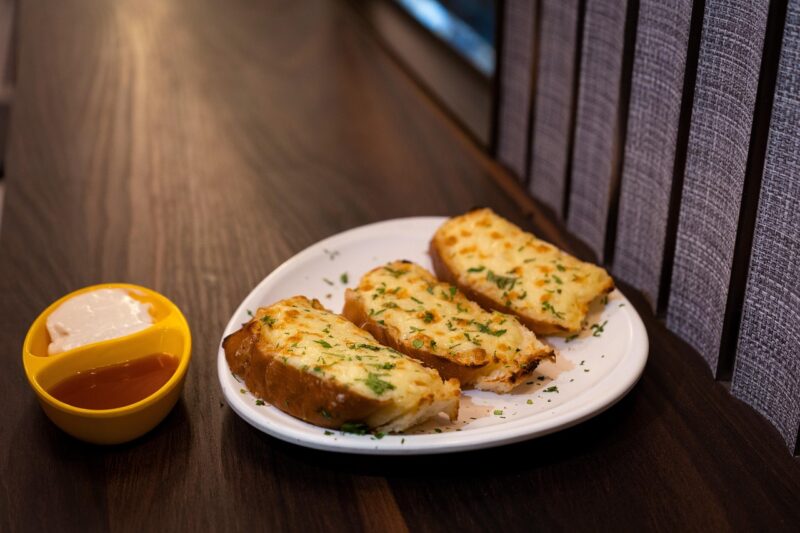an you freeze garlic to preserve its flavor and nutritional qualities? Absolutely! In this blog post, we’ll explore the ins and outs of freezing garlic, including practical techniques, storage methods, and some tips on how to incorporate it into your meals.
How to Freeze Garlic: A Step-by-Step Guide
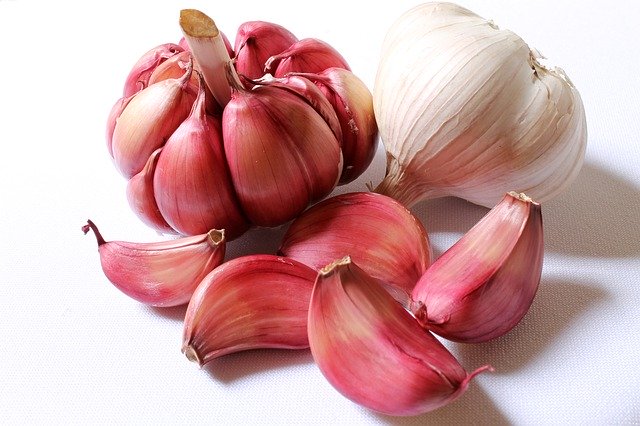
Freezing garlic isn’t as daunting as it might sound, and with a few simple steps, you’ll have a stockpile of garlic ready for your culinary adventures.
Step 1: Choose Your Garlic
Start with fresh garlic bulbs. Look for firm, unblemished bulbs without any signs of sprouting or mold.
Step 2: Prepare the Garlic
There are several ways to prepare garlic for freezing. You can freeze whole bulbs, individual cloves, or minced garlic, depending on your preference.
Whole Bulbs: Wrap the entire bulb tightly in plastic wrap and then place it in a freezer-safe bag. This method helps retain moisture but will require thawing time later.
Individual Cloves: Peel the cloves and place them in a single layer on a baking sheet. Freeze them for several hours until solid, then transfer to a freezer bag. This method makes it easy to grab exactly what you need.
Minced Garlic: Chop the garlic finely and place it in ice cube trays. Fill the trays with olive oil or water to create garlic cubes. Once frozen, pop them out and store them in a freezer-safe bag. This is particularly handy for sautéing!
Step 3: Label and Store
Always label your freezer bags with the date and the content to keep track of freshness. Garlic can last up to six months in the freezer, although it retains its best quality for three months.
Different Methods of Freezing Garlic: Pros and Cons
While the basic steps to freezing garlic are straightforward, different methods can suit various culinary needs. Here are some common methods along with their advantages and disadvantages:
Whole Bulbs
Pros: Retains the natural moisture and flavor; easy to prepare.
Cons: Takes longer to thaw and use; less flexibility when using smaller amounts.
Individual Cloves
Pros: Easy to use and portion; quick freezing time; retains taste well.
Cons: Requires peeling and storing separately, which may be time-consuming initially.
Minced Garlic in Oil
Pros: Perfect for sautéing; adds flavor directly to dishes.
Cons: Can alter the texture; oil can degrade more quickly in the freezer.
Garlic Paste
Pros: Spreadable and versatile; can be used directly from the freezer.
Cons: Requires more preparation upfront; can be less versatile than whole cloves.
Thawing Frozen Garlic: Best Practices
Thawing garlic properly is just as important as freezing it. Incorrect thawing can lead to loss of flavor and texture.
Direct Use: In many cases, you can use frozen garlic directly in your cooking. For example, if you’re adding it to a sauté pan, there’s no need to thaw it first.
Thaw in the Fridge: If you need thawed garlic for a recipe, you can leave it in the fridge overnight.
Quick Thaw: For minced garlic, placing the cubes in a bowl at room temperature for about 15 minutes should suffice.
Using Frozen Garlic in Your Cooking
Incorporating frozen garlic into your dishes is simple and rewarding.
Soups and Stews: Add frozen garlic directly to your broth or stew; the flavor will bloom beautifully as it heats up.
Stir-Fries: Toss in frozen garlic cubes while cooking vegetables for an instant flavor boost.
Sauces: Combine minced garlic cubes with tomatoes or cream for rich pasta sauces.
Bread: Mix minced garlic with butter to create a flavorful spread for garlic bread, using it straight from the freezer.
The Science Behind Garlic Freezing
You might be curious about what happens to garlic during the freezing process. When garlic is frozen, the water within the cells forms ice crystals, causing some cell structures to break down. This breakdown is why thawed garlic may become slightly softer in texture compared to fresh garlic, yet the flavor remains intact.
Common Myths About Freezing Garlic
As with many culinary practices, several myths surround the freezing of garlic. Let’s address a few:
It Loses All Its Flavor: While some flavor may slightly diminish, properly frozen garlic retains much of its aromatic potency.
You Can’t Freeze Cooked Garlic: Though it’s possible to freeze cooked garlic, if you want to use it in dishes that require strong flavor, it’s better to freeze raw garlic.
Sprouting Garlic Cannot Be Frozen: While it’s best to choose fresh garlic, sprouted garlic can still be frozen, but it may impart a slightly different flavor in your dishes.
Health Benefits of Freezing Garlic
Preserving garlic doesn’t just mean keeping it fresh for longer. It also locks in the health benefits associated with this powerhouse ingredient. Garlic antioxidants, anti-inflammatory compounds, and other nutrients remain intact during freezing, allowing you to enjoy their myriad health benefits year-round.
Cooking with Garlic: Beyond Freezing
Freezing garlic may be one way to preserve it, but let’s not forget about other delightful ways to use garlic in your cooking.
Roasting: Roasted garlic spreads can leverage the sweetness of garlic when caramelized in the oven. Whole bulbs can be wrapped in foil and roasted until soft, adding a luxurious flavor to bread or soup.
Infusions: Create garlic-infused oil by simmering whole cloves in olive oil. This infusion can elevate salads and sautés.
Fermentation: For the adventurous, fermented garlic not only transforms its flavor profile but also amplifies its health benefits, making it a unique addition to condiments and dressings.
Conclusion
Freezing garlic is a simple, effective, and rewarding way to preserve one of the most beloved ingredients in cuisines worldwide. With the right techniques, you can enjoy the robust flavor and health benefits of garlic anytime, regardless of the season. Whether you choose to freeze whole bulbs, individual cloves, or minced garlic, knowing how to store this ingredient effectively ensures you’ll always have it on hand.


